Cannot Remove a Language from Windows 10 (Fix)
You may fail to remove a language from your system if the regional & language settings of your system are not properly configured. Moreover, the improper registry settings may also cause the issue at hand.
The issue arises when a user fails to remove a language (or the option is greyed out) or the language is automatically re-added to the system (after removal of the language). For some users, a language is shown in the Language bar but not present in the Windows Settings.
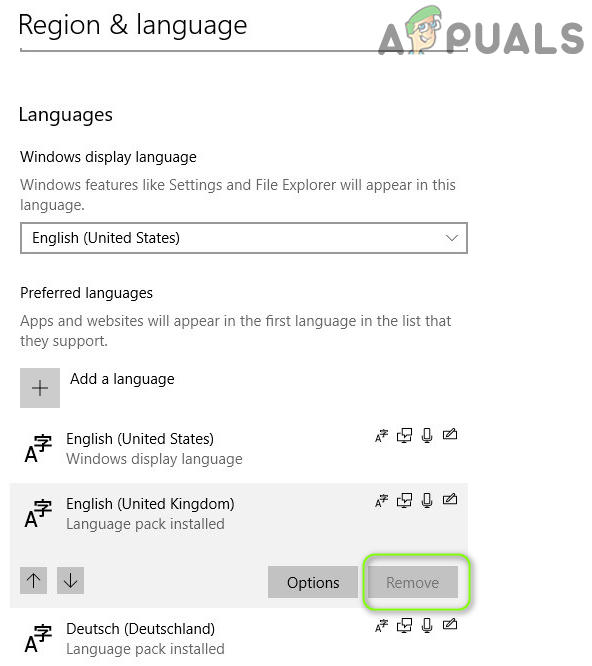
You can remove languages from Windows 10 by trying the solutions mentioned below, but before that, make sure “Language Preferences” (in Sync Your Settings) is disabled. Also, check if the Windows & drivers of your system are updated. Additionally, check if the dictation feature is not causing the issue. Moreover, check if clean booting your system resolves the issue (Razer’s Synapse Software & Language Indicator applications are reported to cause the issue). Furthermore, check if performing a Disk Cleanup on the system drive sorts out the language issue.
Solution 1: Edit the Language Settings
You may fail to remove a language if the language settings of your system are not properly configured. In this case, editing the relevant language settings may solve the problem. Before proceeding, make sure that the language you want to remove & its keyboard layout is not selected in the Language bar.
Change the Display Language
- Press the Windows key & open Settings.
- Now select Time & Language & steer to the Language tab.
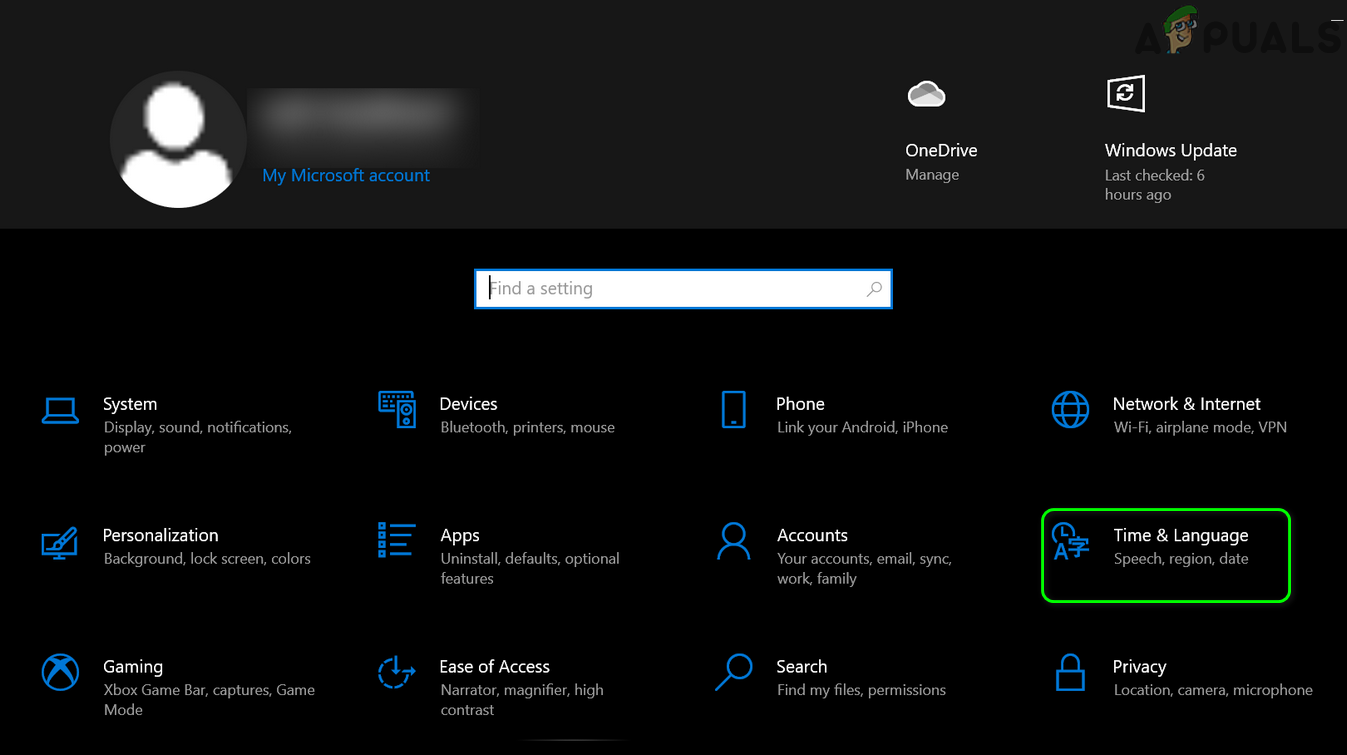
Open Time & Language in the Windows Settings - Then check if your system has more than one language installed. If not, click on Add a Language & follow the prompts to add the language.

Add a 2nd Language to Your System - If a second language is already added, expand the dropdown of Windows Display Languages & select that language. Make sure the language you want to remove is not set as the Windows Display Language. It will be better to use a language that does not have a similar base language that you want to use e.g., if you want to remove USA English, then do not select UK English.
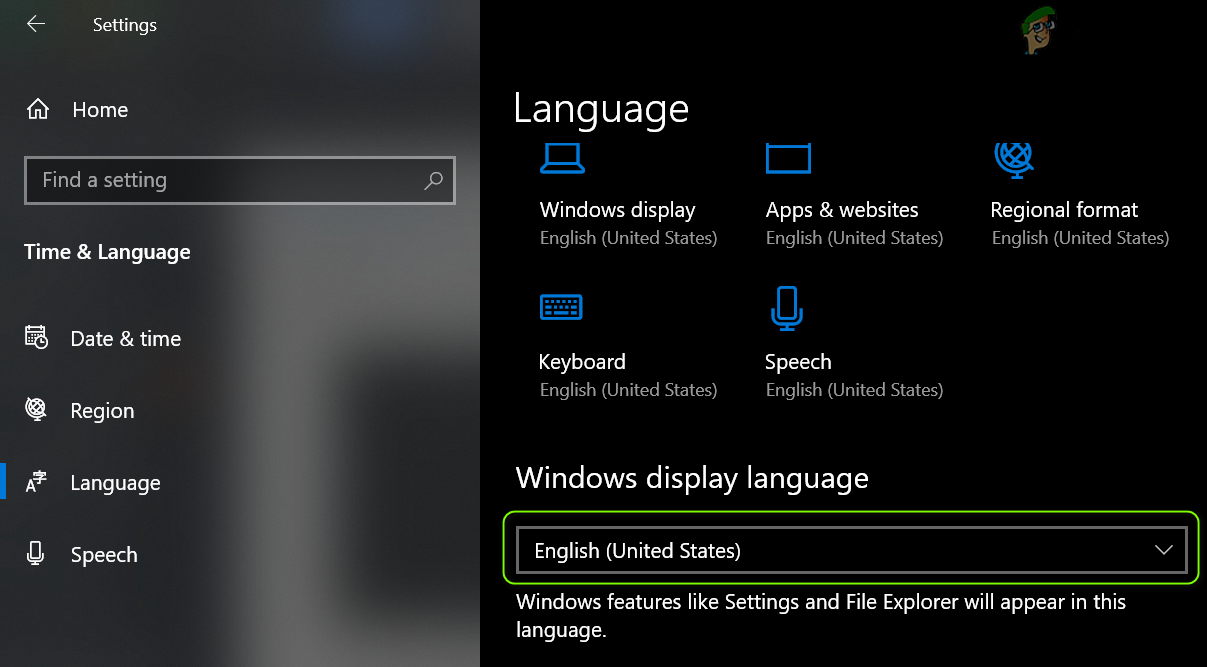
Change Windows Display Language - Then reboot your PC & check if you can remove the problematic language.
- If that did not do the trick, then check if re-adding the problematic language sorts out the language issue.
- If not, then check if removing/re-adding the language that you want to keep sorts out the language issue.
If the issue persists, then check if removing the problematic languages through an office application (e.g., Word) solves the problem.
Re-arrange the Languages
- Open the Language tab in the Time & Language of Windows Settings (discussed above).
- Now expand the Language that you want to keep e.g., English (United States), & click on its Up-arrow (till it reaches the top of the list).
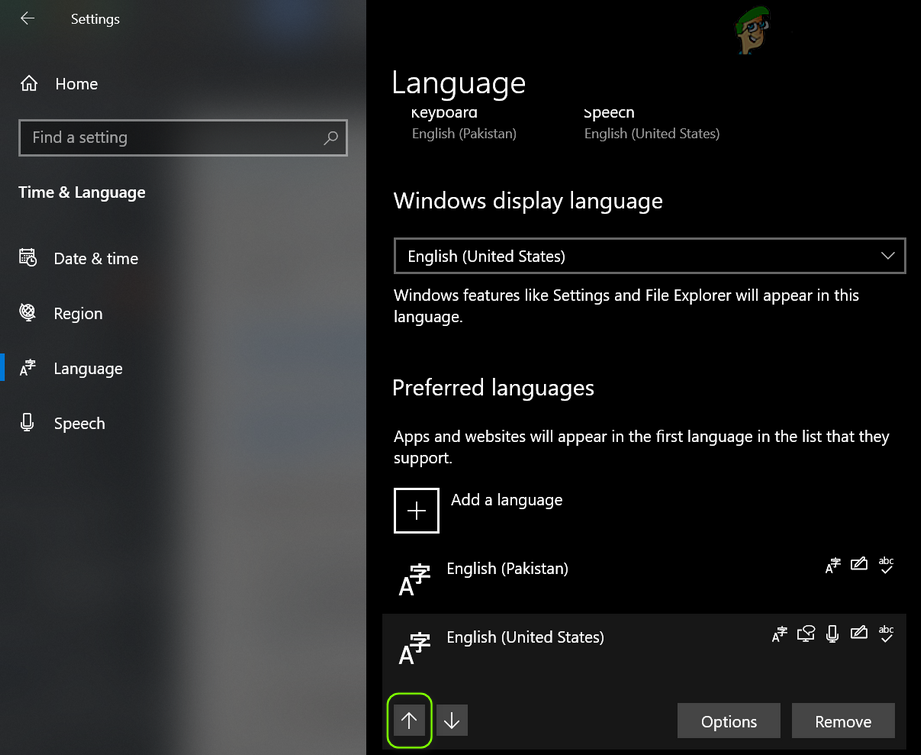
Move the Required Language to the Top of the List - Then make sure to move the Language (that you want to remove) to the bottom of the language list & reboot your PC.
- Upon reboot, check if you can successfully remove the problematic language.
Install the Language Pack of the Problematic Language
- Navigate to the Language tab of Time & Language in the Windows Settings (discussed above) & expand the problematic language.
- Then click on Options & check if a Language Pack is available for the language. If so, then add the language pack & reboot your PC.

Open the Options of the Problematic Language - Upon reboot, check if you can remove the problematic language.
- If not, then check if removing/re-adding the keyboard to the problematic language (or the language that you want to keep) resolves the problem.
Solution 2: Change Regional Settings of Your System
The regional settings of your system may be stopping you from removing the problematic language (or causing its reappearance). In this context, editing the regional settings of your system may solve the problem. Before proceeding, make sure the regional settings of your system match your geographical location i.e., if you are in Canada, your region is set to Canada.
Change System Locale
- Press the Windows key & in the search box, type Control Panel. Then, in the results shown, select Control Panel.
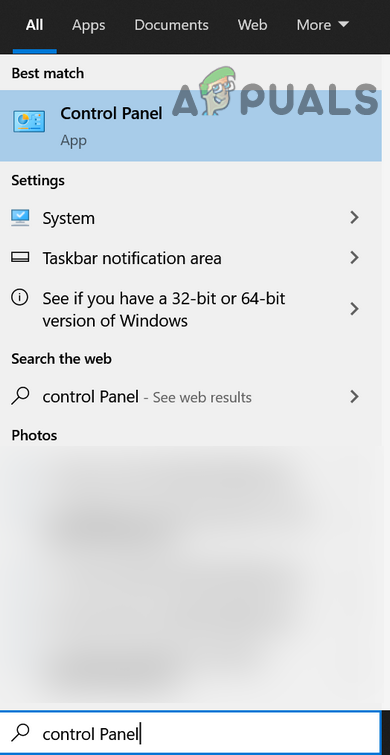
Open Control Panel - Now open Clock and Region & click on Region.

Open Region in Clock and Region - Then steer to the Administrative tab & click on Change System Locale.

Click on Change System Locale - Now, make sure the language that you want to remove is not set as Current System Locale & checkmark Beta: Use Unicode UTF-8 for Worldwide Language Support.

Change System Locale & Enable UTF-8 Support - Now apply your changes & reboot your PC to check if the problematic language can be removed.
Copy Settings to Welcome Screen
- Remove the problematic language (if possible, use an office application to remove the language).
- Then steer to the Administrative tab of Region (as discussed above) & click on Copy Settings.
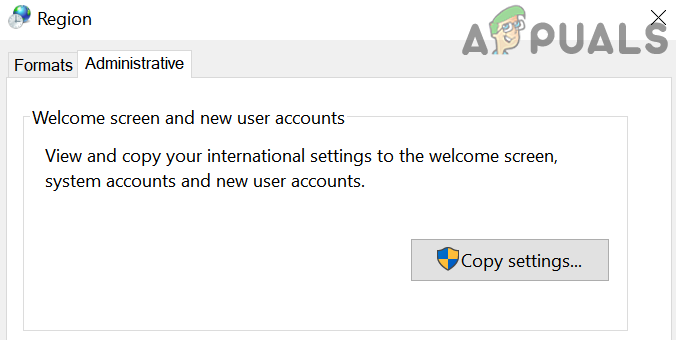
Click on the Copy Settings Button - Now, make sure that the current user settings are your desired settings, & then, near the bottom of the window, checkmark both options of “Copy Your Current Settings to” (i.e., “Welcome Screen and System Accounts” & “New User Accounts”).

Copy Your Settings to Welcome Screen & New User Accounts - Then apply your changes & reboot your PC to check if the language issue is resolved.
Solution 3: Use the PowerShell Commands
If none of the solutions has done the trick for you, then you may try the following commands to remove the problematic commands.
Right-click on the Windows button & in the quick access menu, choose Windows PowerShell (Admin). If a UAC prompt is received, click Yes. Now execute the commands discussed below to check if it removes the problematic language.
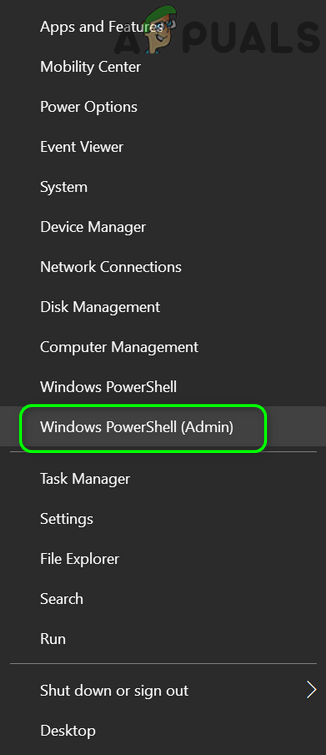
Remove the Problematic Language
- Execute the following:
Get-WinUserLanguageList
- Now note down the LanguageTag of the problematic language (e.g., en-US).
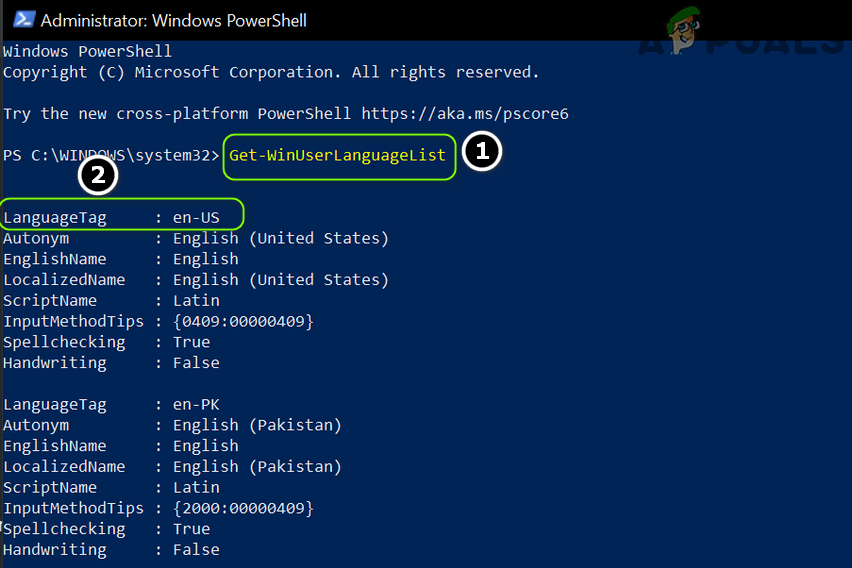
Note Down the LanguageTag - Then execute the following (make sure to replace the <Languagecode> with the tag of the language that you want to remove e.g. en-US):
$LangList = Get-WinUserLanguageList $MarkedLang = $LangList | where LanguageTag -eq "<languagecode>" $LangList.Remove($MarkedLang) Set-WinUserLanguageList $LangList -Force

Use MarkedLang to Remove the Language - Now reboot your PC & check if the problematic language is removed.
Set the Desired Language as the Default
- Note down the LanguageTag (discussed above) of your preferred language that you want to keep, e.g., if you want to set US English as default, execute the following:
$1 = New-WinUserLanguageList en-US
- Then execute the following:
Set-WinUserLanguageList $1
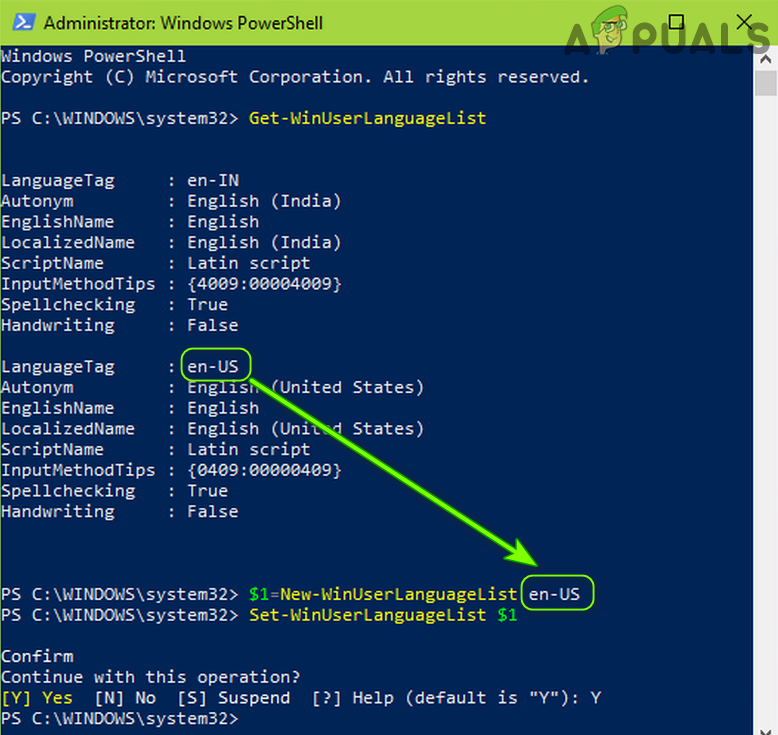
Set Your Desired Language as Default - Now close the PowerShell & reboot your PC.
- Upon reboot, check if the problematic language can be removed.
Use the lpksetup Command
- Note down the LanguageTag (discussed above) of the problematic language, e.g., if you want to remove English UK, its LanguageTag is en-GB. Then execute the following to remove it:
lpksetup.exe /u en-GB
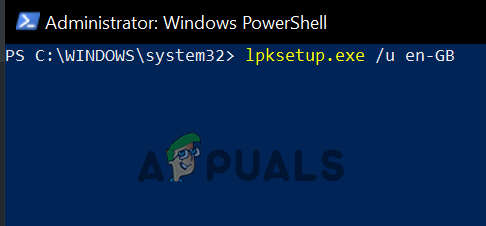
Use lpksetup Command - Then reboot your PC & check if the language issue is resolved.
Remove LanguageExperiencePack
- Execute the following:
Get-AppxPackage -allusers *LanguageExperiencePack*

Note Down the Package Full Name - Now, in the list shown, note down the PackageFullName of the problematic Language, e.g., if you want to remove English-GB, then its PackageFullName is Microsoft.LanguageExperiencePacken-GB_19041.15.36.0_neutral__8wekyb3d8bbwe.
- Then execute the following:
Remove-AppxPackage -AllUsers -Package " LanguageExperiencePacken-GB_19041.15.36.0_neutral__8wekyb3d8bbwe”

Remove the Full Language Package - Now reboot your PC & check if the language issue is resolved.
Solution 4: Edit the System’s Registry
If the issue persists, then the language issue could be a result of a wrong configuration of the system’s registry. In this context, editing the relevant registry keys may solve the problem.
Warning: Advance with extreme caution & at your own risk as editing the system’s registry is a proficient task & if not done properly, your system & data may be at risk.
Make sure to back up your system’s registry.
Now hit the Windows key & in the search, type: Registry Editor. Then, in the results shown, right-click on Registry Editor, & in the sub-menu, choose Run as Administrator. Then you may attempt the following edits.

Open Registry Editor as Administrator Edit the InstallLanguage Key
- Navigate to the following:
Computer\HKEY_LOCAL_MACHINE\SYSTEM\CurrentControlSet\Control\Nls\Language
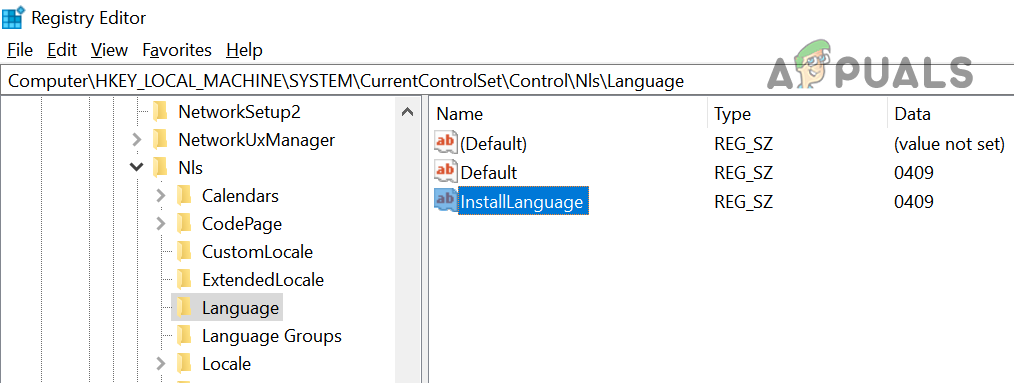
Change the Installed Language Value - Then double-click on InstallLanguage & change its value to another language (that you want to keep). You can find the Language value from the Keyboard Identifier (e.g., UK English has a value of 0x00000809, & if you want to use UK English, then change the InstallLanguage value to 00000809).
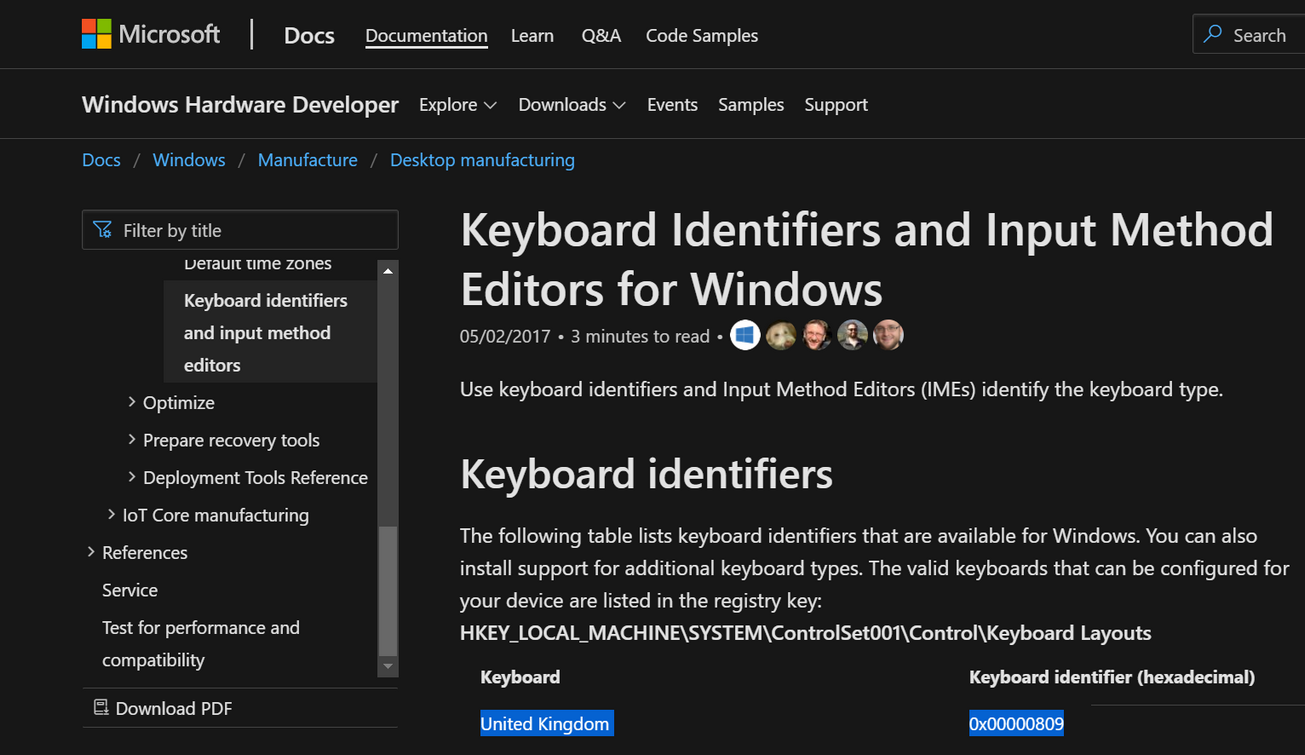
Find the Keyboard Identifier - Now reboot your PC & check if the language issue is resolved.
Rename the Language Key in the User Profile
- Navigate to the following:
HKEY_LOCAL_MACHINE\SOFTWARE\Microsoft\Windows NT\CurrentVersion\ProfileList
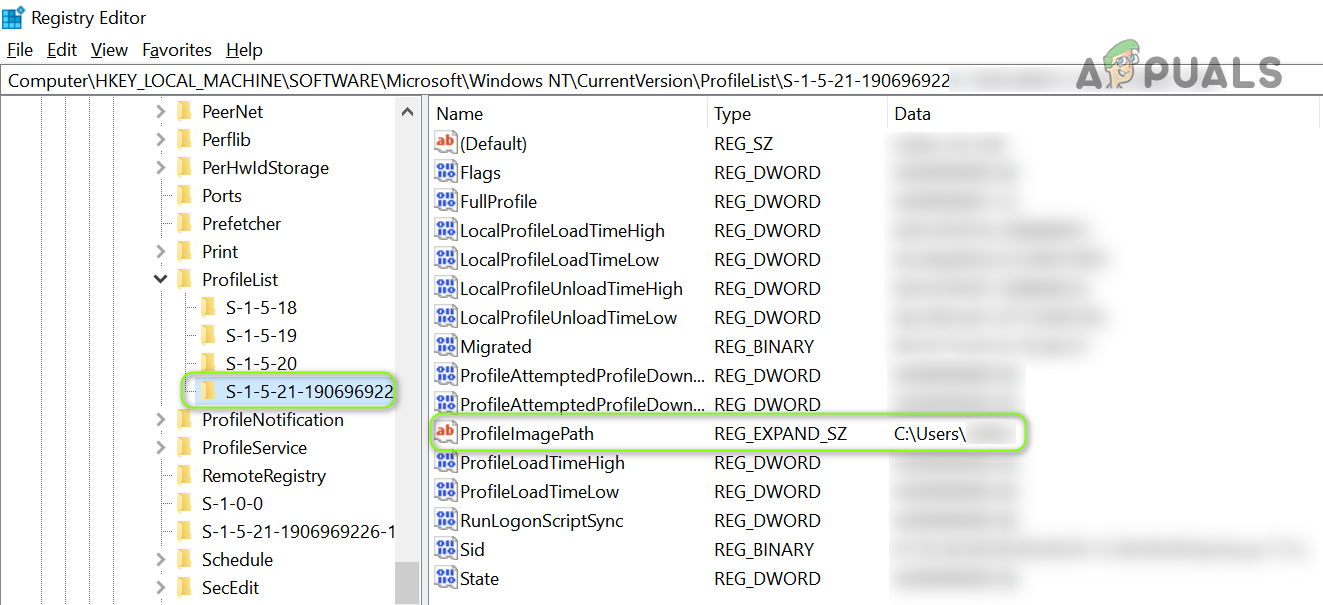
Find Your Profile in the Registry - Now expand the ProfileList key & select the first sub-key under it.
- Then, in the right pane, check the value of ProfileImagePath. If it matches your profile, then note it down, otherwise, check the ProfileImagePath of other sub-keys until you find the one that matches your user profile (e.g., folder starting from S-1-5-21 is your user profile).
- Now navigate to the following:
HKEY_USERS\
- Then expand the User Profile that matches your profile (found in step 3) & navigate to the following sub-keys:
Control Panel>>International>>User Profile

Rename the Language in the User Profile - Now, rename the Language key (that you do not want to use) to the language that you want to use (e.g., if you do not want to use EN-GB but want to keep EN-US, then rename the EN-GB key to EN-US).
- Then close the editor & reboot your PC.
- Upon reboot, check if the system is clear of the Language issue.
Delete the Keyboard Layout Key
- Navigate to the following path:
HKEY_LOCAL_MACHINE\SYSTEM\CurrentControlSet\Control\Keyboard Layouts\
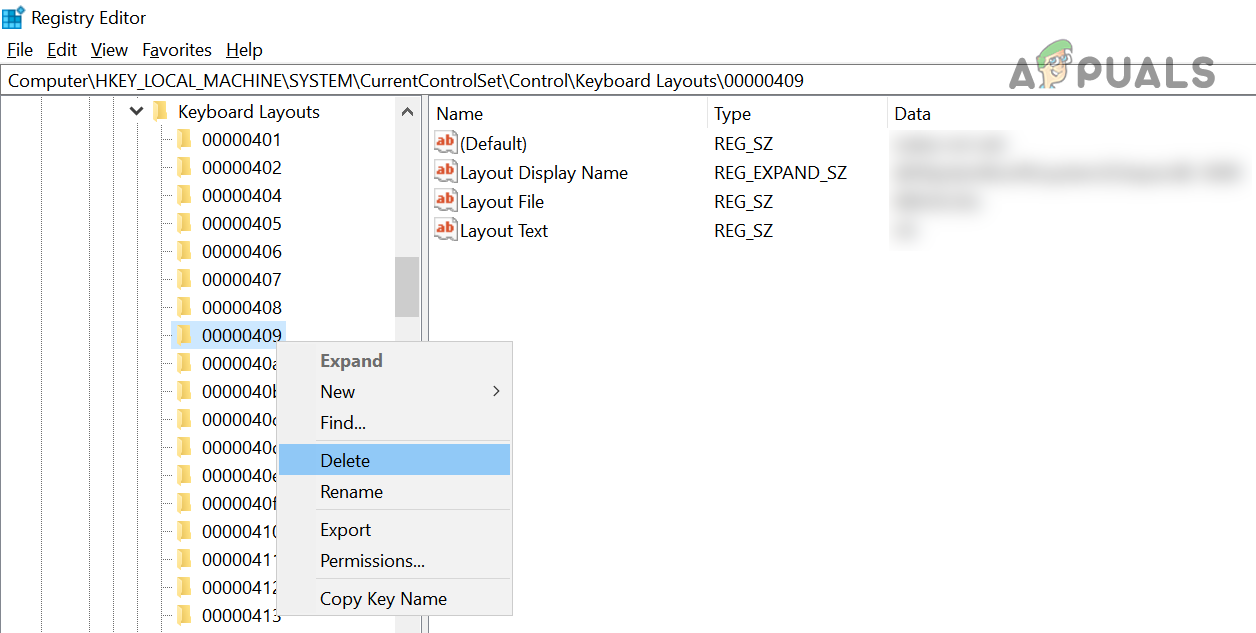
Delete the Key Related to the Language That You Want to Remove - Now find out the problematic language value. You can find the value on the Keyboard Identifier, e.g., if you do not want to use the English-USA keyboard, then delete the key having the value of 00000409.
- Then reboot your PC & check if the language can be removed.
Edit the Preload Registry Keys
- Navigate to the following:
Computer\HKEY_USERS\.DEFAULT\Keyboard Layout\Preload

Note the Key & Match it with the Keyboard Identifier - Now launch a web browser (do not close the Registry Editor) & navigate to the Microsoft Keyboard Identifiers page.
- Then, switch to the Registry Editor & note down the value of the Data column for the first entry (below the Default) e.g., 00000409.
- Now, switch to the Keyboard Identifiers page & search for the value (e.g., 00000409).
- Then check which keyboard layout the value refers to (e.g., 00000409 refers to United States – English). Repeat the same till you find out the value of the problematic language keyboard.
- Once the identifier of the problematic language is found, switch to the Registry Editor & delete the key related to the problematic language.
- Now, repeat the same on the following:
HKEY_CURRENT_USER\Keyboard Layout\Preload HKEY_USERS\.DEFAULT\Control Panel\International\User Profile HKEY_USERS\.DEFAULT\Control Panel\International\User Profile System Backup
- Now reboot your PC & check if the system is clear of the language issue (if not, then check if deleting the language in the Windows Settings sorts out the issue).
- If the issue is still there, then check if changing the values of the keyboards (that are not required) in the Preload key to 0 & rebooting the system solves the problem (the Language Bar may not show on the Taskbar).
- If the issue persists, navigate to the Preload registry key (step 1) & right-click on the Preload key.
- Now choose Permissions & click on the Advanced button.

Open Permissions of the Preload Key - Then click on Disable Inheritance & confirm to disable it.
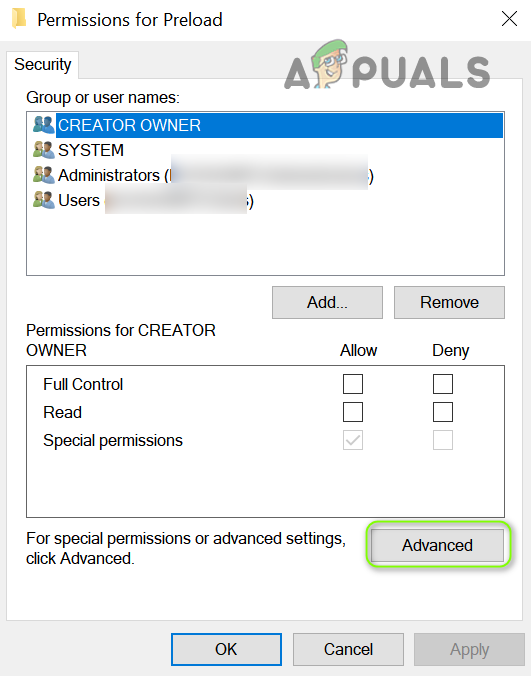
Open Advanced Permissions of the Preload Key - Now click on Apply & in the Permissions for Preload window, select System.
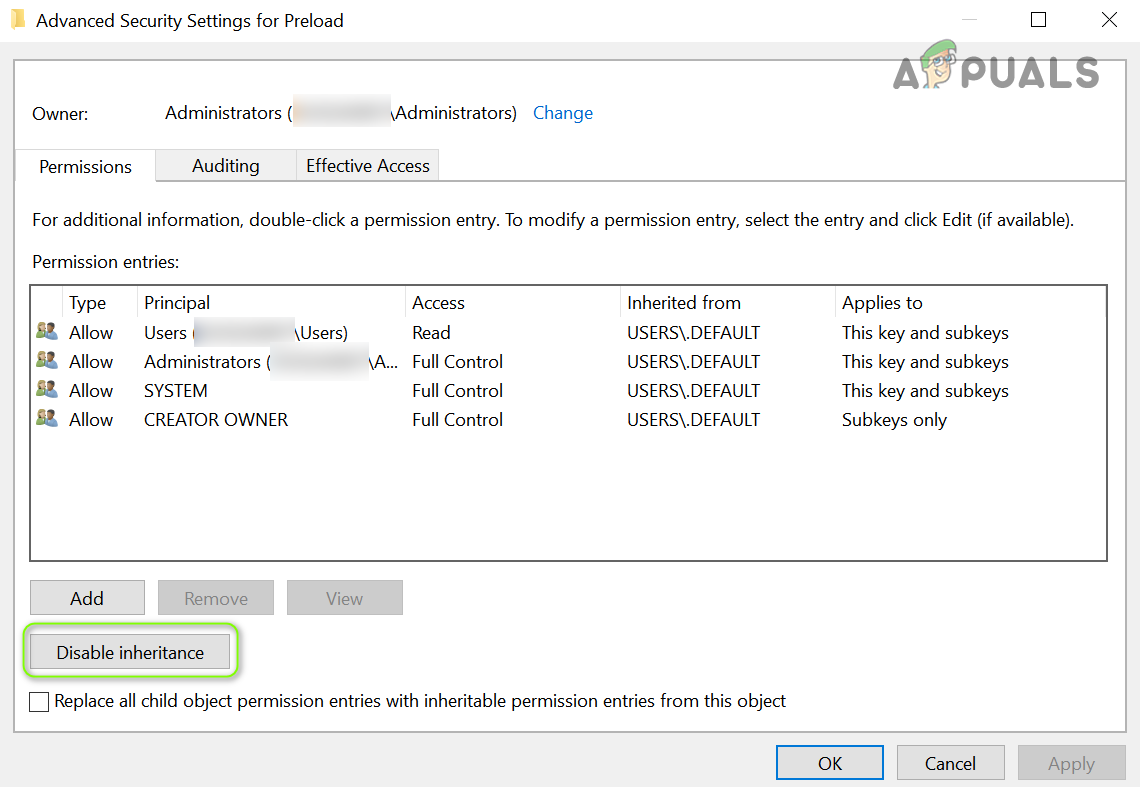
Disable Inheritance of Preload Key - Then uncheck the option of Full Control (make sure you are editing the System account permissions, not any of your administrator account) & apply your changes. You may not be able to add/delete any new keyboard layouts, till you revert the Full Control to the System account.
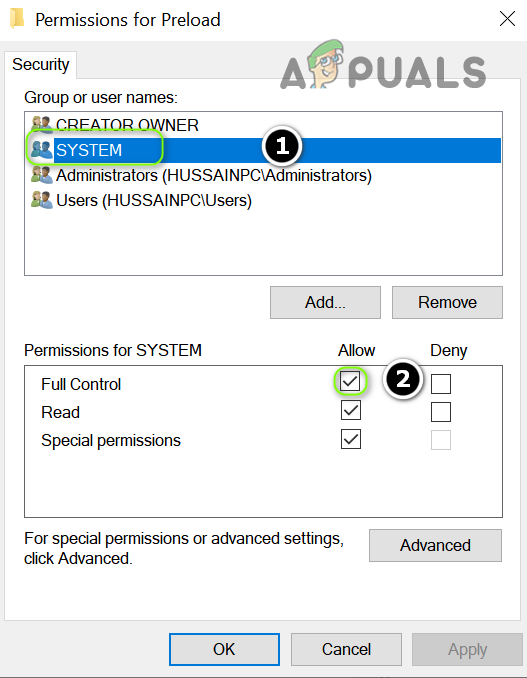
Disable Full Control of the System Account on the Preload Key - Now reboot your PC & check if the language issue is resolved.
- If the issue persists, then check if disabling the Full Control of the System account on the Keyboard Layout key (the parent key of Preload) resolves the issue.
- If not, then check if deleting the Preload key at the following path solves the problem:
Computer\HKEY_USERS\.DEFAULT\Keyboard Layout\Preload
If the issue persists, then check if creating a new user account resolves the problem. If the issue is still there, then check if using a 3rd party cleaner utility sorts out the issue.
- Then execute the following (make sure to replace the <Languagecode> with the tag of the language that you want to remove e.g. en-US):





